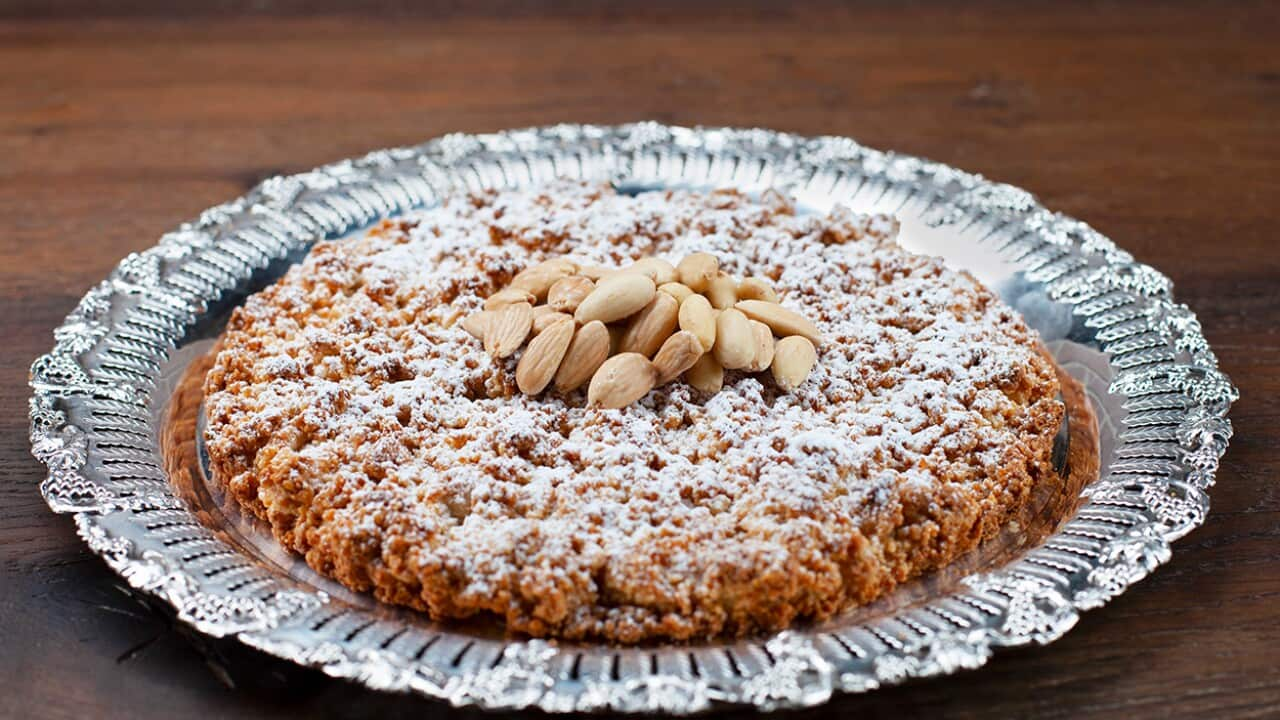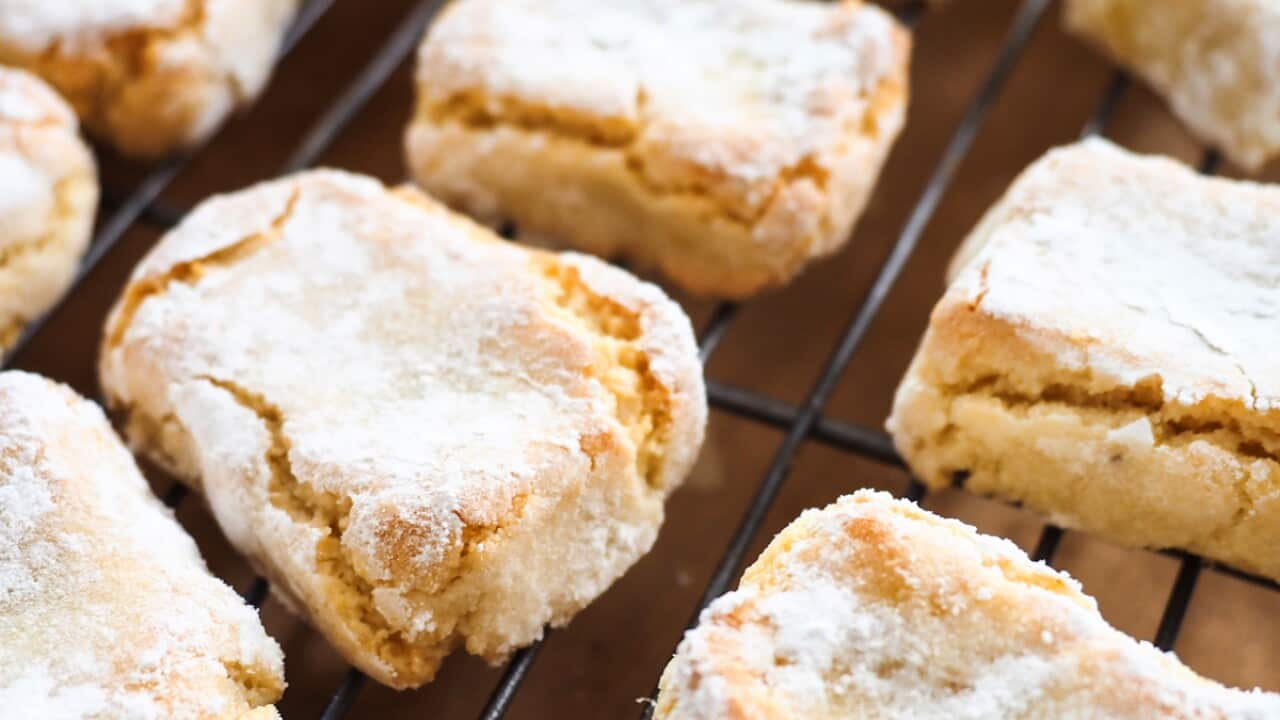Certain Italian desserts have familiar origins. We often hear of the Sicilian cannoli or Venetian tiramisu and can easily classify them as traditional Italian dolci — the word for desserts. But what we don't always hear about are Neapolitan desserts and more specifically, dolci natalizi (Christmas desserts).
YEP - WE KNOW WHERE CANNOLIS ARE FROM

Cocoa cannoli with ricotta (cannoli al cacao con ricotta)
Neapolitan Christmas desserts have travelled through centuries but rarely across borders. Nestled in Naples' historic centre and sold in the most antique pasticcerie (patisseries), these sweets are rarely seen outside of Italy and even Naples itself.
In my case, I was lucky to have a Neapolitan nonna (grandmother) who lived across the road from me as I was growing up. Each year, I'd eagerly await the signature smells and tastes she'd create. As a curious child, I'd peep into her 'shed' kitchen, like many Italian grandmothers had, to see the magic in action.
Mostaccioli, roccocò, and susamielli are some of Naples' signature dolci natalizi, and ones my nonna had mastered. Nonna was the leading lady of this craft and predictably the envy of many Neapolitan women at Christmas time. She would make them for our family, her friends' families and local business owners. They were a beautiful, wholesome way for her to say 'thank you' and appreciate how others had helped her throughout the year.
A RECIPE FOR ROCCOCÒ

Sweet Christmas taralli (roccocò)
A decade on from her passing, I spent Christmas in Italy last year and saw her sweets in abundance around Naples' world-famous San Gregorio Armeno Christmas market. As I walked through Via San Gregorio Armeno nativity-themed stores, I was led by some tantalising smells to the nearby pasticcerie where I tasted the delicacies fresh from the oven. As I stood in the street eating my mostaccioli with tears of nostalgia running down my face, I realised that never had I seen them sold anywhere Down Under.
Pisto
Characterising the Neapolitan Christmas taste is pisto. It's a spice mix that's usually sold at Neapolitan markets.
Nonna could never find it in Melbourne, so she began making it at home. It's made by grounding cinnamon, nutmeg, cloves, white pepper and star anise with a mortar and pestle.
Mostaccioli
Mostaccioli were easily my favourite of nonna's Christmas specialities. Mostaccioli are shaped like diamonds and coated in chocolate. They're made with cocoa, flour, almonds, sugar and pisto.
I can clearly recall my chocolate-covered hands on hot summer days as I sat at her table eating far too many.
They were first made by Neapolitan farmers who used mosto (crushed fruit juice), which was an affordable sweetener — and that's how the term mostaccioli was born.

Mostaccioli were easily my favourite of nonna's Christmas specialities. Mostaccioli are shaped like diamonds and coated in chocolate. Source: Annalisa Cercone
Roccocò
Round in shape and either soft or hard, roccocò consist of flour, almonds, citrus, honey and pisto. Like many Neapolitan dishes, they originate from a convent and date back to the 1300s.
Growing up, I was a bit sneaky with them. I'd sometimes pretend they were bracelets and wear them around my wrist. But the more I ate, the less 'jewellery' I sadly had.
Susamielli
Shaped like the letter S, susamielli were also invented by Neopolitan nuns, but they were invented in the 1600s.
Susamielli are named after the ingredients they contain, sesamo (sesame) and miele (honey). These treats are hard to bite into, which is why they were reserved for the adults of my family.
With Italy back in lockdown and Christmas looking very different, Neapolitans have been returning to these recipes. It's only a matter of time before other similar traditions are adopted and carried on by younger generations.
Annalisa Cercone hopes to be the next master of mostaccioli, roccocò and susamielli. She is selling homemade ones in Melbourne this festive season. For more information, see her website .
Mostaccioli recipe
Recipe by Annalisa Cercone. Serves approximately 20 pieces
Ingredients
- 500 g tipo 00 flour
- 300 g caster sugar
- 150 g almond meal
- 30 g cocoa powder
- 1 orange zest
- 1 tsp baking powder
- ½ tsp baking soda
- 250 ml warm water
- Pisto (see below)
- 500 g dark cooking chocolate (for coating)
Pisto
- 4 g ground star anise
- 4 g ground nutmeg
- 4 g ground cinnamon
- 4 g ground cloves
- 4 g white pepper
1. In a large bowl combine flour, almond meal and sugar. Add cocoa powder, pisto, baking powder, baking soda and zest to mix well.
2. Using your hands or a wooden spoon, create a well in the centre and gradually add water until a homogenous dough forms. You may require more or less water depending on the temperature of the room in which you prepare it.
3. Roll the dough into a log, wrap with baking paper and allow it to rest in a refrigerator.
4. Remove dough from refrigerator after approximately one hour and use a rolling pin to flatten the mixture onto a clean surface. Dough should be less than 1cm in thickness.
5. Preheat oven to 180 degrees Celsius.
6. Using a knife or cookie cutter, slice dough into approximately 20 diamonds with each face being 7cm in length.
7. Line tray with baking paper and arrange diamond shapes with approximately 2cm spacing in between points. Bake for 18 minutes or longer if you prefer them harder.
8. Remove and allow to cool.
9. In a ceramic bowl resting on a pot of boiling water, melt dark cooking chocolate while ensuring the base of the bowl does not touch the water. Using a tablespoon, drizzle the melted chocolate over the baked mostaccioli and rest on a cooking rack. Should you prefer all sides coated, dip mostaccioli directly into the melted chocolate with a skewer. Allow approximately 30 minutes for the chocolate coating to cool and set.
Note: Mostaccioli can be kept in an airtight container for up to two weeks. Presenting them in a glass jar decorated with red ribbon will make a lovely Christmas gift. This recipe can be made vegan if plant-based chocolate is used.
ITALIAN SWEETS AND TREATS

Merenda is the Italian food ritual we all need right now









